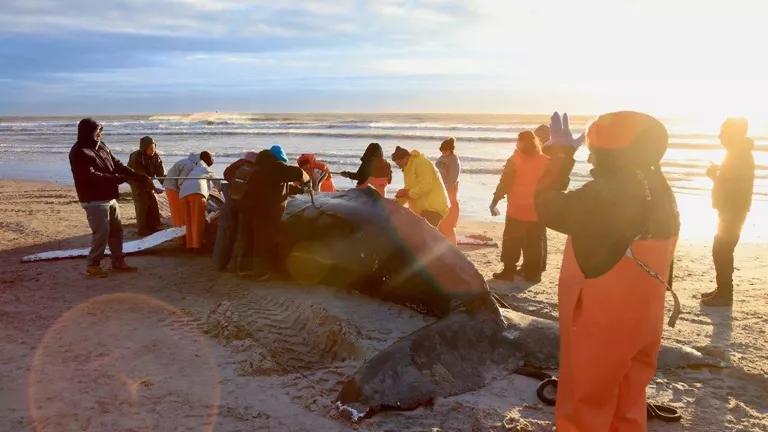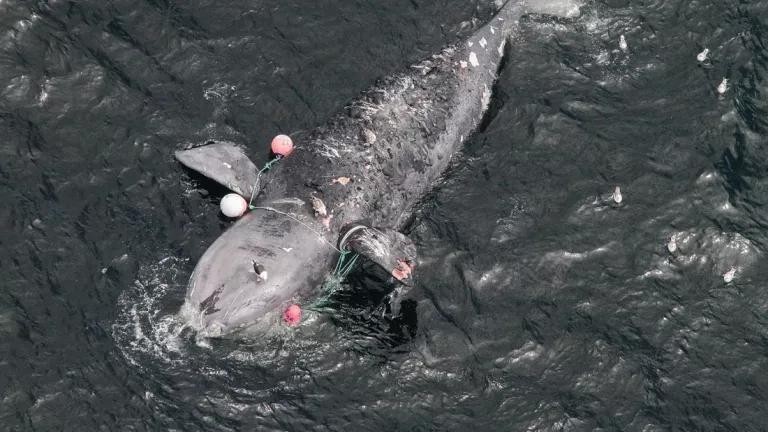
The hunt for oil under the Atlantic could cost us one of our great whale species. That was the grim warning at the root of a letter sent today by NRDC with thirty national and Mid- and South Atlantic regional groups to the federal agencies in charge of guarding our gentlest giants.
In March, President Obama spared the Atlantic Ocean from the oil and gas drilling auction block. But industry continues the push to use its ships with airguns to conduct seismic surveys from Delaware to Florida in a sweep for maybe deep-water reserves. With no planned lease sales for the Atlantic, intense seismic survey blasts in these waters would wreak pointless havoc. Months of deafening underwater airgun explosions could also tip the North Atlantic right whale into the unending darkness of extinction.
North Atlantic right whales are identified by their robust body, lack of a dorsal fin, bumps on the head region, and strongly bowed lower jaw. Large and slow, with thick blubber, the right whale was a favorite target of whalers for oil. Today they number less than 450 individuals and, despite decades of protection, dwindle.
New data indicates that the North Atlantic right whale population is not growing (as previously believed) but declining in number; right whale moms are having calves at an alarmingly slow rate; and a data set (spanning 30 years compiled by the New England Aquarium) indicates that entanglement in fishing gear is also a serious threat to the population.
Reviewing these and other data, twenty-eight right whale experts—among them some of the world’s leading authorities on this endangered species—concluded that the overlapping seismic surveys proposed for the Atlantic Ocean would “substantially increase the risk that the population will slip further into decline and would jeopardize its survival.”
Whalers once killed these animals for the oils inside them. Now we risk making the same mistake for the oil beneath them. Are we ready to trade away our great whales so oil and gas companies can make maps of the seafloor?
For this population, each calf matters. On May 5th, a new baby male washed up dead. Preliminary results suggest that the 4 or 5 month old calf was alive when it was struck and killed by a ship’s propeller. The planned seismic surveys would run alongside the right whale’s nursery grounds.
More than one hundred coastal communities are adamantly opposed to Atlantic seismic; a bipartisan group of representatives has called for a halt to it; and the fishing community has weighed in strongly against. Now the science has raised the stakes. Together, we’re calling on the government to update its environmental impact statement, reconsider its Endangered Species Act review, and follow through on its promise to protect the Atlantic Ocean—stop seismic.




